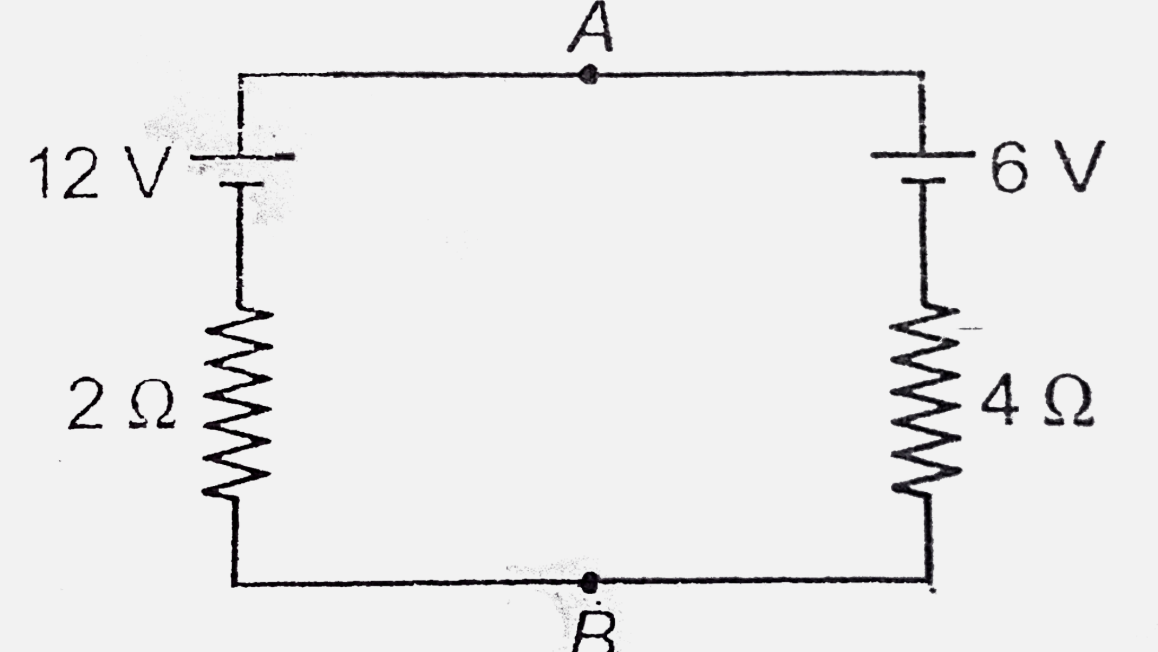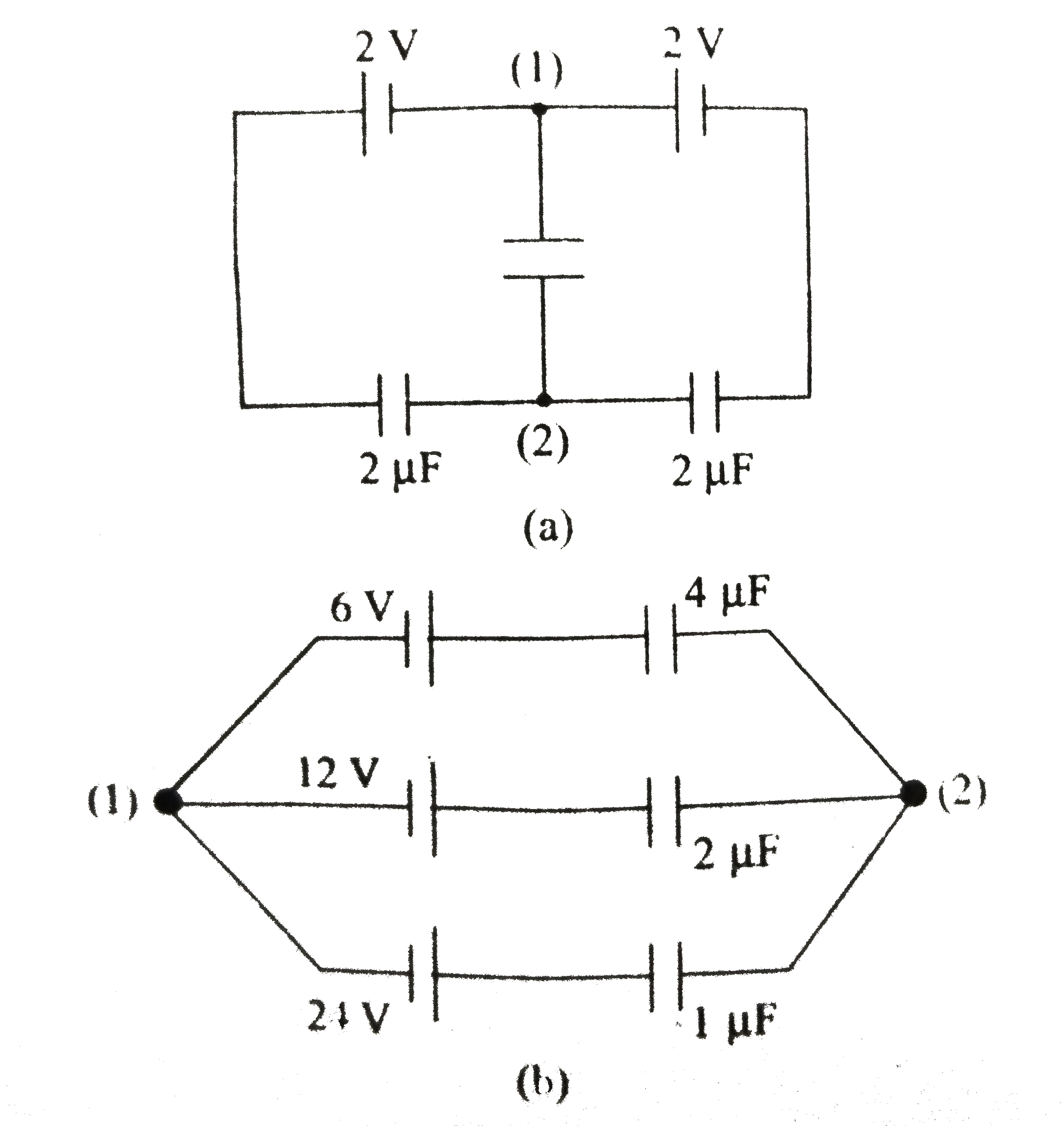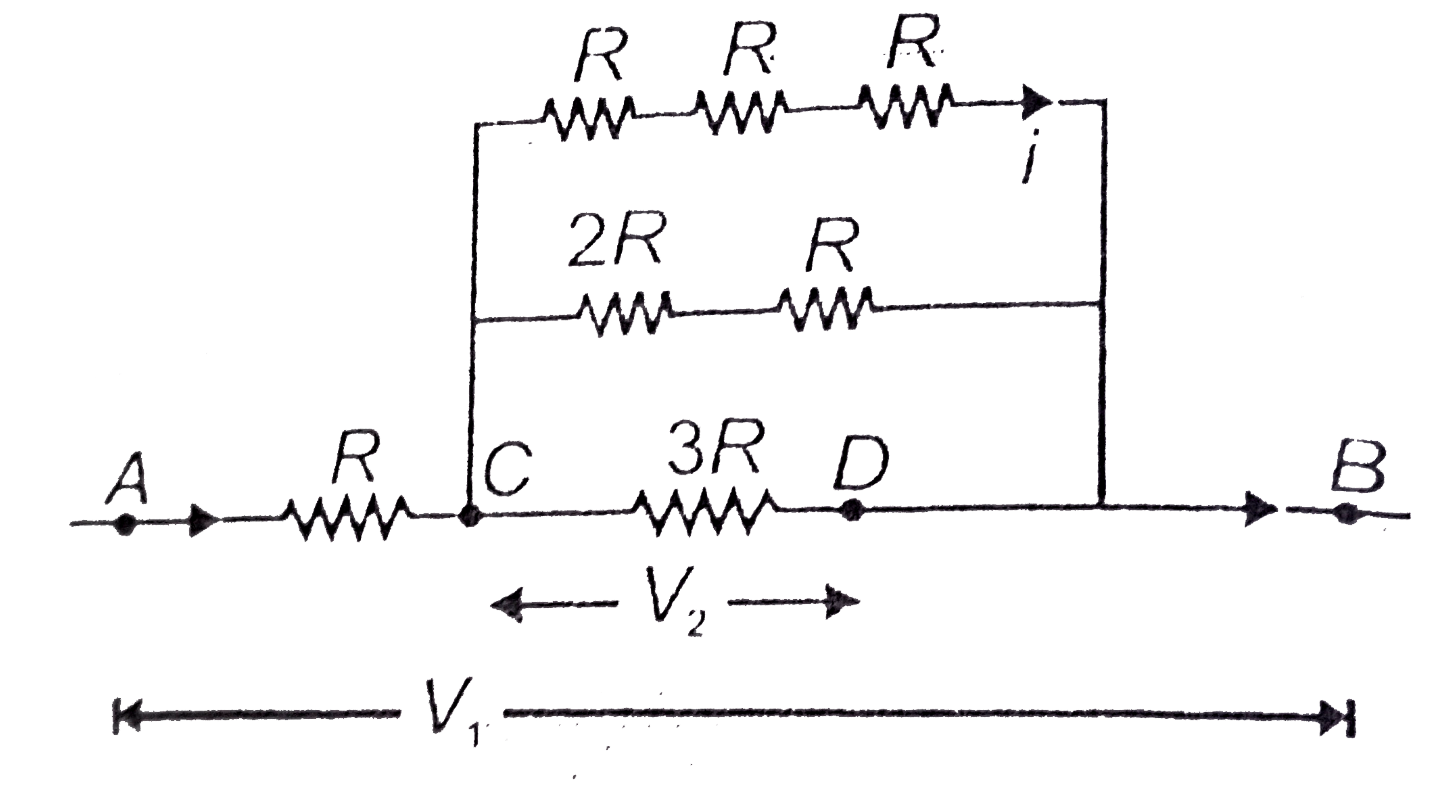AB is a part of circuit. Find the potential difference VA−VB if
a. current i=2A and is constant,
b. current i=2A and is increasing at the rate of 1As−1,
c. current i=2A and is decreasing at the rate of 1As−1,

Ldidt=1didt
writing KVL from A to B
VA−1didt−5−2i=VB
(i)Put i=2,didt=0
VA−5−4=VB
∴VA−VB=9 volt
(ii)Put i=2didt=1,VA−1−5−4=VB or VA−VB=10V0
(iii)Put i=2didt=−1,VA+1−5−2×2=VB or VA=8 volt .

Topper's Solved these Questions
- ELECTROMAGNETIC INDUCTIONBook:RESONANCE ENGLISHChapter:ELECTROMAGNETIC INDUCTIONExercise:Problem
Explore 12 Videos
- ELECTROMAGNETIC INDUCTIONBook:RESONANCE ENGLISHChapter:ELECTROMAGNETIC INDUCTIONExercise:Exercis-1
Explore 63 Videos
- ELECTRODYNAMICSBook:RESONANCE ENGLISHChapter:ELECTRODYNAMICSExercise:Advanced level problems
Explore 29 Videos
- ELECTROSTATICSBook:RESONANCE ENGLISHChapter:ELECTROSTATICSExercise:HLP
Explore 38 Videos
Similar Questions
AB is a part of circuit. Find the potential difference VA−VB if
a. current I=2A and is constant,
b. current i=2A and is increasing at the rate of 1As−1,
c. current i=2A and is decreasing at the rate 1As−1,

View SolutionIf current is decreasing at a rate of 1000 As−1 p.d. between A and B is

View SolutionIn the given circuit, current I is 2A and it is decreasing at the rate of 103AS−1.Then VB−VA is
_PHY_E06_148_Q01.png)
View SolutionIn the circuit (Fig.) what is potential difference VB−VA (in V) when current I is 5A and is decreasing at the rate of 103As−1

View SolutionPotential difference across AB , i.e., VA−VB is

View SolutionThe network shown in the figure is a part of complete circuit. What is the potential difference VB−VA when the current I is 5A and is decreasing at a rate of 103A/s?

View SolutionFind the potential difference Va−Vb between the points (1) and (2) shown in each part of Fig.

View SolutionGive, potential difference V = (8 + 0.5) V and current I = (2 + 0.2) A. The value of resistance R is
View SolutionIn the circuit shown, the potential differences, V1 ( between A and B ) and V2 ( between C and D ), are

View SolutionThe network shown in figure is a part of a complete circuit. If at a certain instant, the current i is 4 A and is increasing at a rate of 103A/S. ThenVB−VA will be
View Solution
